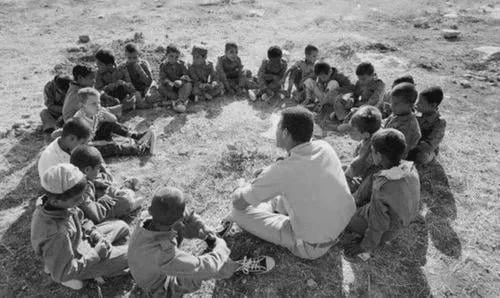The Classroom is Burning
On Radical Pedagogy and Space
With you, I want to closely investigate the classroom as a space, its relationship to pedagogy and the power structures it reinforces or disrupts.
How can classrooms be designed and undesigned according to the egalitarian principles of radical pedagogy? How can we create spaces that truly respond to the knowledge and experiences of their users?
What does it mean to reinvent relationships in the educational model, where everyone in the space is both a teacher and a student? How would the physical space respond to this shift in traditional dynamics? What does it mean to escape the institutionalization of education, undoing the boundaries between life and study and draw inspiration from indigenous and popular methods of knowledge production and circulation? How would the body react to such a transformation?
This inquiry extends to urbanism and landscape architecture: How do the built environment and its spatial hierarchies condition the way we learn? What happens when the boundaries between inside and outside dissolve, when classrooms expand into public space, into nature, into the city? How can educational spaces function symbiotically with their surroundings rather than as isolated units? These questions are not only pedagogical but spatial, social, and political.
Saja Amro is an architect, educator, and designer based between The Netherlands and Palestine. Her work investigates the influence of spatial design on social dynamics in education. In her practice, she disrupts traditional classroom structures, aiming to rebuild them on the principles of radical pedagogy. As a tutor at the Architecture Department of the Gerrit Rietveld Academie, Saja uses the classroom as a place to collaborate with her students and reimagine spaces inspired by popular education methodologies, and roots of indigenous cultures. Saja co-founded Common Ground, a collaborative artistic gastronomic project focusing on using the dining table and the kitchen as research laboratories and spaces for knowledge production and exchange.
-
Critically analyze how classroom design reinforces or disrupts power structures.
Translate embodied classroom memories into spatial and written interventions.
Design alternative educational spaces based on principles of radical pedagogy.
-
Teachers, Architects, Psychologists, Architecture students, Pedagogues.
To anybody who went to a traditional classroom with an array of desks, a white or blackboard, and a teacher.
-
The final outcome of the course will be shaped collaboratively, guided by our shared interests and reflections. As an initial proposal, I invite you to develop a written reflection on a classroom that continues to inhabit your body, mind, or dreams. This text should be accompanied by drawings that describe the spatial qualities of the environment. Building on this, you will be asked to redesign and reimagine the space—challenging its materiality, form, and function—based on your own needs, as if you held full agency to transform it.
At the end of the course, we aim to bring together all your contributions into a collective publication, if possible.
-
8 Weeks
Class is limited to 25 students. Sign up to be notified when registration opens.

